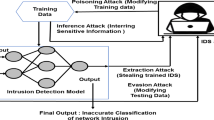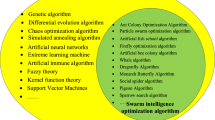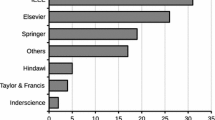Abstract
Rotating machines are one of the most common equipments in modern industry, effective fault detection and diagnosis methods are vital to equipment health monitoring. In industrial production, the known information of fault types is insufficient generally, especially for constructing complex equipment and components. In previous studies of equipment fault detection, accurate fault classification and diagnosis methods have been presented, while seldom takes the condition of paucity of fault data into account. Therefore, this paper presents a novel antibody population optimization based artificial immune system (APO-AIS) for rotating equipment anomaly detection. The proposed approach can detect abnormal events while monitoring the operating condition. Meanwhile, an antigen-based antibody selecting method, a density-based antibody screening method and an optimized judgment rule based on individual difference are presented for improving the iteration evolution. The presented methods and optimized judgment rule enhance the robustness and reduces training burden for the proposed approach, which leads to accurate anomaly detection in strong background noise and in practical industrial environment. The effectiveness and robustness of the proposed method has been proven experimentally by bearing fault diagnosing and centrifugal pump condition monitoring in this paper.
Similar content being viewed by others
References
S. Lu and X. Wang, A new methodology to estimate the rotating phase of a BLDC motor with its application in variable-speed bearing fault diagnosis, IEEE Transactions on Power Electronics, 33 (4) (2018) 3399–3410.
M. Zeng, W. Zhang and Z. Chen, Group-based K-SVD denoising for bearing fault diagnosis, IEEE Sensors Journal, 19 (15) (2019) 6335–6343.
M. R. Shahriar, P. Borghesani and A. C. C. Tan, Electrical signature analysis-based detection of external bearing faults in electromechanical drivetrains, IEEE Transactions on Industrial Electronics, 65 (7) (2018) 5941–5950.
Y. Li, W. Zhang, Q. Xiong, D. Luo, G. Mei and T. Zhang, A rolling bearing fault diagnosis strategy based on improved multiscale permutation entropy and least squares SVM, Journal of Mechanical Science and Technology, 31 (6) (2017) 2711–2722.
A. Hu and L. Xiang, An optimal selection method for morphological filter’s parameters and its application in bearing fault diagnosis, Journal of Mechanical Science and Technology, 30 (3) (2016) 1055–1063.
G. Tang, X. Wang and Y. He, Diagnosis of compound faults of rolling bearings through adaptive maximum correlated kurtosis deconvolution, Journal of Mechanical Science and Technology, 30 (1) (2016) 43–54.
Q. Jiang, F. Chang and B. Sheng, Bearing fault classification based on convolutional neural network in noise environment, IEEE Access, 7 (2019) 69795–69807.
Q. Jiang and F. Chang, A novel rolling-element bearing faults classification method combines lower-order moment spectra and support vector machine, Journal of Mechanical Science and Technology, 33 (4) (2019) 1535–1543.
L. Montechiesi, M. Cocconcelli and R. Rubini, Artificial immune system via euclidean distance minimization for anomaly detection in bearings, Mechanical Systems and Signal Processing, 76–77(2018) 380–393.
C. A. Laurentys, G. Ronacher, R. M. Palhares and W. M. Caminhas, Design of an artificial immune system for fault detection: a negative selection approach, Expert Systems with Applications, 37 (7) (2010) 5507–5513.
I. Aydin, M. Karakose and E. Akin, An adaptive artificial immune system for fault classification, Journal of Intelligent Manufacturing, 23 (2012) 1489–1499.
X. Z. Gao, H. Xu, X. Wang and K. Zenger, A study of negative selection algorithm-based motor fault detection and diagnosis, International Journal of Innovative Computing, Information & Control, 9 (2) (2013) 875–901.
F. P. A. Lima, M. L. M. Lopes, A. D. P. Lotufo and C. R. Minussi, An artificial immune system with continuous-learning for voltage disturbance diagnosis in electrical distribution systems, Expert Systems with Applications, 56 (2016) 131–142.
E. Alizadeh, N. Meskin and K. Khorasani, A dendritic cell immune system inspired scheme for sensor fault detection and isolation of wind turbines, IEEE Transactions on Industrial Informatics, 14 (2) (2018) 545–555.
A. Abid, M. T. Khan and M. S. Khan, Multidomain features-based GA optimized artificial immune system for bearing fault detection, IEEE Transactions on Systems, Man, and Cybernetics: Systems, 50 (1) (2020) 348–359.
F. B. Abid, S. Zgarni and A. Braham, Distinct bearing faults detection in induction motor by a hybrid optimized SWPT and aiNet-DAG SVM, IEEE Transactions on Energy Conversion, 33 (4) (2018) 1692–1699.
M. T. Khan, M. U. Qadir, A. Abid, F. E. Nasir and C. W. de Silva, Robot fault detection using an artificial immune system, Control Intell. Syst. J. Acta Press, 43 (2) (2015) 107–117.
J. Qiao, F. Li, S. Yang, C. Yang, W. Li and K. Gu, An adaptive hybrid evolutionary immune multi-objective algorithm based on uniform distribution selection, Information Sciences, 512 (2020) 446–470.
Q. Lin, Y. Ma, J. Chen, Q. Zhu, C. A. C. Coello, K. Wong and F. Chen, An adaptive immune-inspired multi-objective algorithm with multiple differential evolution strategies, Information Sciences, 430–431(2018) 46–64.
H. Han, W. Lu and J. Qiao, An adaptive multiobjective particle swarm optimization based on multiple adaptive methods, IEEE Transactions on Cybernetics, 47 (9) (2017) 2754–2767.
T. R. F. Mendonça, C. H. N. Martins, M. F. Pinto and C. A. Duque, Variable window length applied to a modified Hanning filter for optimal amplitude estimation of power systems signals, IEEE Power & Energy Society General Meeting, Denver, CO, USA (2015) 1–5.
Sulistyaningsih et al., Performance comparison of blackman, bartlett, hanning, and kaiser window for radar digital signal processing, 4th International Conference on Information Technology, Information Systems and Electrical Engineering, Yogyakarta, Indonesia (2019) 391–394.
Q. Xu, X. Liu, K. Zhu, P. W. T. Pong and C. Liu, Magnetic-field-sensing-based approach for current reconstruction, sag detection, and inclination detection for overhead transmission system, IEEE Transactions on Magnetics, 55 (7) (2019) 1–7.
P. Saurabh and B. Verma, An efficient proactive artificial immune system based anomaly detection and prevention system, Expert Systems with Applications, 60 (2016) 311–320.
The Bearing Data Center of Case Western Reserve University, Cleveland, Ohio, USA (2020).
M. Amar, I. Gondal and C. Wilson, Vibration spectrum imaging: a novel bearing fault classification approach, IEEE Transactions on Industrial Electronics, 62 (1) (2015) 494–502.
X. Lou and K. A. Loparo, Bearing fault diagnosis based on wavelet transform and fuzzy inference, Mechanical Systems and Signal Processing, 18 (5) (2004) 1077–1095.
B. Samanta and K. R. Al-Balushi, Artificial neural network based fault diagnostics of rolling element bearings using timedomain features, Mechanical Systems and Signal Processing, 17 (2) (2003) 317–328.
A. Malhi and R. X. Gao, PCA-based feature selection scheme for machine defect classification, IEEE Transactions on Instrumentation and Measurement, 53 (6) (2004) 1517–1525.
S. Seker and E. Ayaz, Feature extraction related to bearing damage in electric motors by wavelet analysis, Journal of the Franklin Institute, 340 (2) (2003) 1077–1095.
F. Li, G. Meng, L. Ye and P. Chen, Wavelet transform-based higher-order statistics for fault diagnosis in rolling element bearings, Journal of Vibration and Control, 14 (11) (2008) 1691–1709.
M. F. Yaqub, I. Gondal and J. Kamruzzaman, Inchoate fault detection framework: adaptive selection of wavelet nodes and cumulant orders, IEEE Transactions on Instrumentation and Measurement, 61 (3) (2012) 685–695.
Acknowledgments
This work was supported in part by the National Key R&D Program of China under Grant 2018YFB1305300, in part by the National Natural Science Foundation of China under Grant 61673244 and Grant 61703240, and in part by the Key R&D Program of Shandong Province of China under Grant 2019JZZY010130 and Grant 2018CXGC0907. The authors also would like to thank the Case Western Reserve University Bearing Data Center for providing the bearing data for this study.
Author information
Authors and Affiliations
Corresponding author
Additional information
Qinyu Jiang received his B.S. degree from Shandong University, Weihai, China, in 2014. He is currently pursuing the Ph.D. degree with the School of Control Science and Engineering, Shandong University, Jinan, China. His research interests include fault diagnosis and classification, pattern recognition and intelligent system.
Faliang Chang received the B.S. and M.S. degrees from Shandong Polytechnic University, Jinan, China, in 1986 and 1989, respectively, and the Ph.D. degree in pattern recognition and intelligence systems from Shandong University, Jinan, in 2003. He has been a Professor of pattern recognition and machine intelligence at School of Control Science and Engineering, Shandong University since 2003. His research interests include computer vision, image processing, intelligent transportation systems, and multi-camera tracking methodology.
Rights and permissions
About this article
Cite this article
Jiang, Q., Chang, F. A novel antibody population optimization based artificial immune system for rotating equipment anomaly detection. J Mech Sci Technol 34, 3565–3574 (2020). https://doi.org/10.1007/s12206-020-0808-x
Received:
Revised:
Accepted:
Published:
Issue Date:
DOI: https://doi.org/10.1007/s12206-020-0808-x




